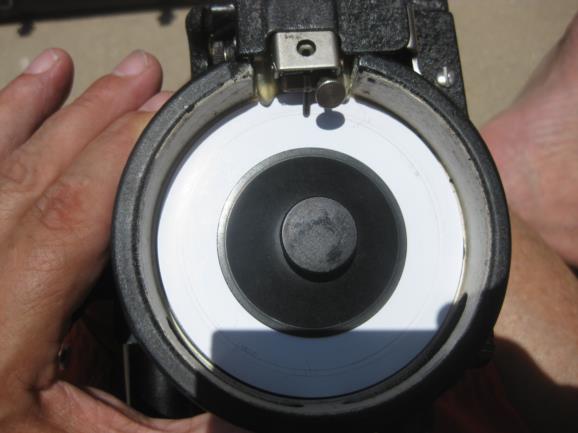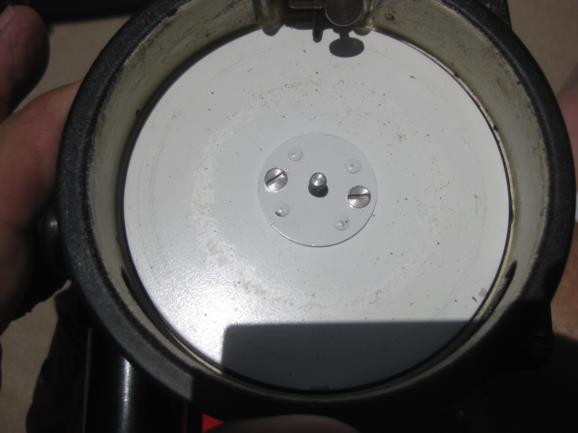
NavList:
A Community Devoted to the Preservation and Practice of Celestial Navigation and Other Methods of Traditional Wayfinding
From: Gary LaPook
Date: 2017 Jul 6, 14:50 -0700
360 degee rotation of the disk equals 5 degrees of altitude change.
You can probably free up your A-10 easily. Remove the averager disk and you will see another white disk with two screws, remove that disk and you will see another screw near the top, just to the left of the pencil lead. This screw is threaded into the end of the shaft that holds the index prism. The shaft is tapered so increased torque on this screw binds the tapered shaft into its seat. Remove the screw and a large, thick washer also comes out but watch you don't lose the locator pin on the bottom of this washer, it is designed so that the washer rotates as part of the shaft so that the screw doesn't unscrew. Remove the screw, washer and pin. With a drift give the now exposed end of the shaft a rap with a hammer applied to the drift. See if the altitude knob now moves.
Taking an A-10 apart is easy and when you put it back together you must put GREASE on the tapered end of the shaft as the tension on that screw forces the taper very tightly into its seat. The only tricky part of the reassembly is getting the anti-backlash spring into its place, I use thread looped around both ends. Maybe Bill Morris will have a recommendation for some particular type of grease to use.
To reasseble and index the index prism to the scale, mount the index shaft verey losely so that it can be moved slightly to disengage the arc from the worm. Go outside and sight around the left edge of the index prism on a distant light and manipulate the prism so that the various teeth of the arc mesh with the worm so that both images are lined up and then tighten up that screw.
gl









